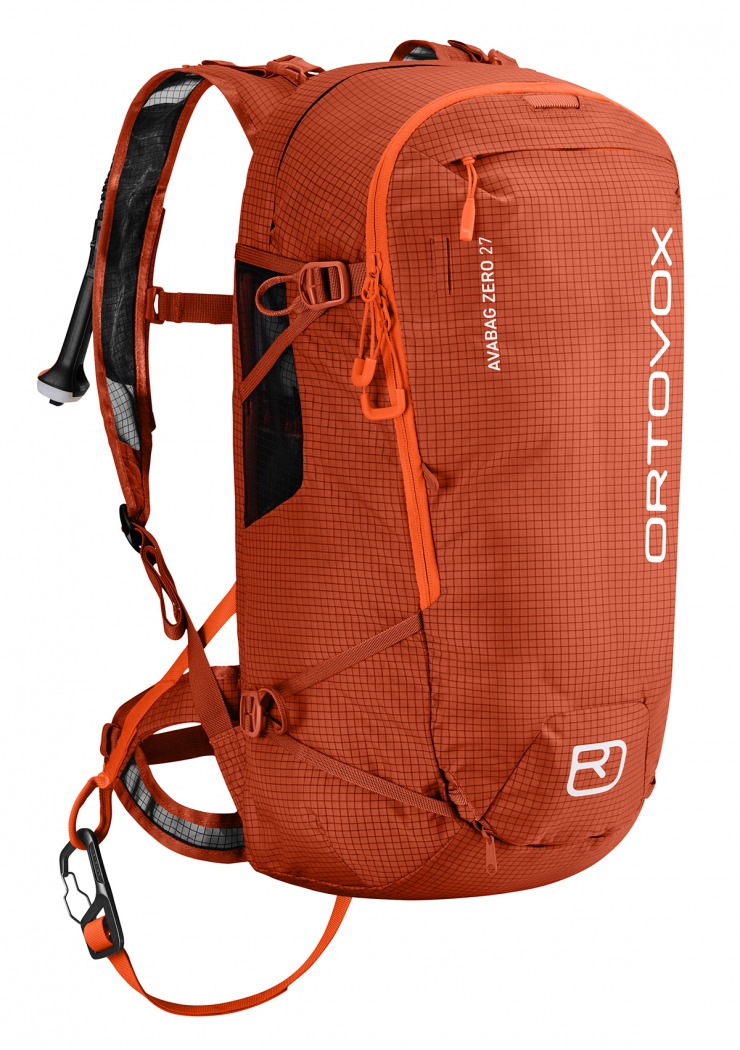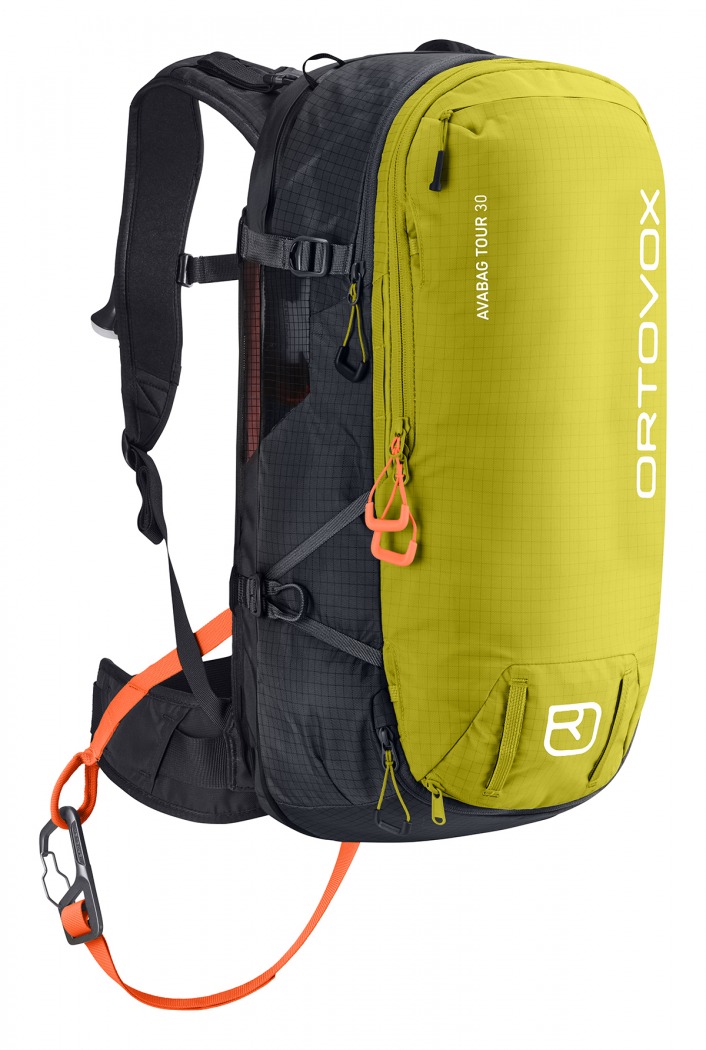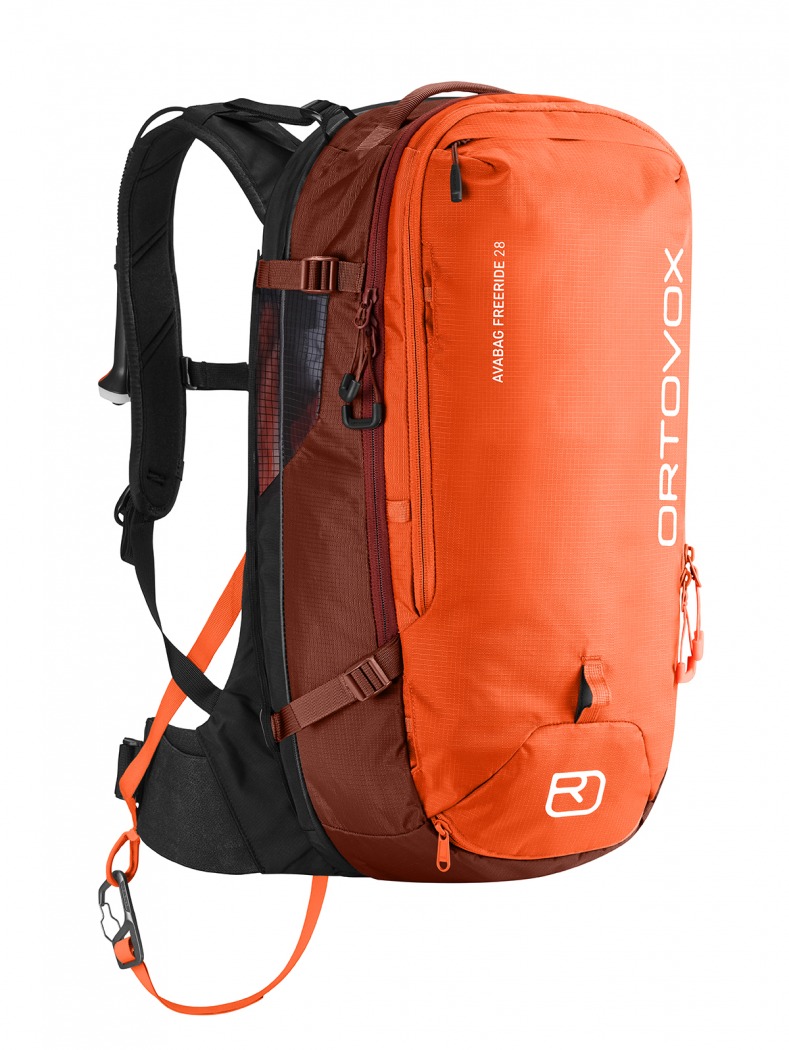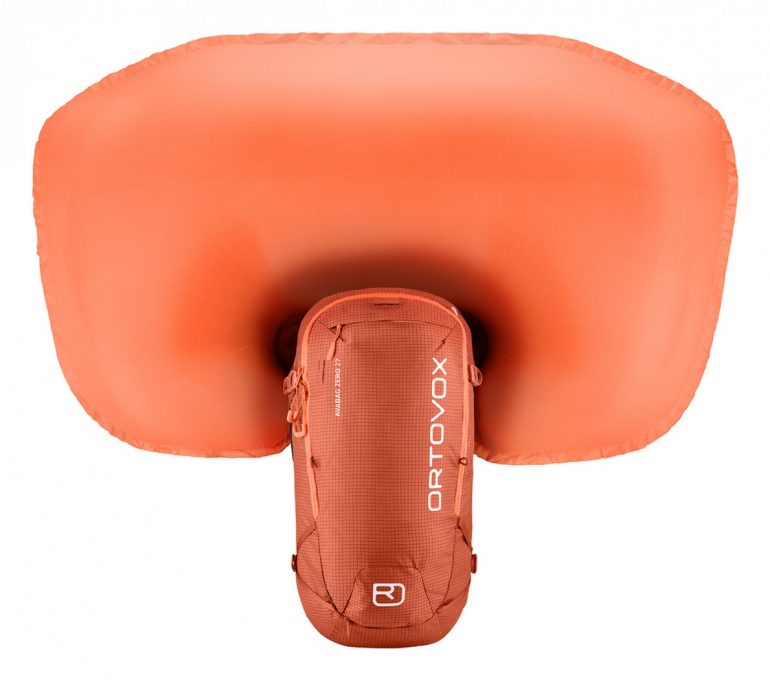
The Ortovox ZERO 27 with the 150L airbag deployed. The bag features the LiTRIC™ system developed by Ortovox and Arc’teryx.
Arc’teryx and Ortovox have joined at the hip to invest in, develop, and bring to market their proprietary airbag technology. They call it LiTRIC™.
The LiTRIC™ system relies on a supercapacitor powered by a Lithium-ion battery. Arc’teryx and Ortovox claim, once charged, the bag can be deployed twice over a roughly 60 hour period without recharging. The range of temps for activating the system and recharge fall within the acceptable ranges for skiing here on Earth: a low deployment temp of -22°F and a recharge temp of -4°F are specified.
According to a press release, the system has a product life of 50 deployments. So yes, can you practice more (and more efficiently) with a supercapacitor system. But not indefinitely.
The system weighs a reported (unverified) 2.4 lbs/1080g. The airbag volume is 150L. Pull the trigger, and “a high-performance centrifugal compressor with a compact axial diffuser fills the airbag in four seconds,” the companies state. The leg strap has a relatively new twist in that it runs between the legs, up towards the front, but connects to a reinforced point on the side of the waist belt, not the waist belt buckle. The trigger is height adjustable and easy to click into activate mode (for a pull) or nest cleanly into a neutral position to prevent accidental inflation.
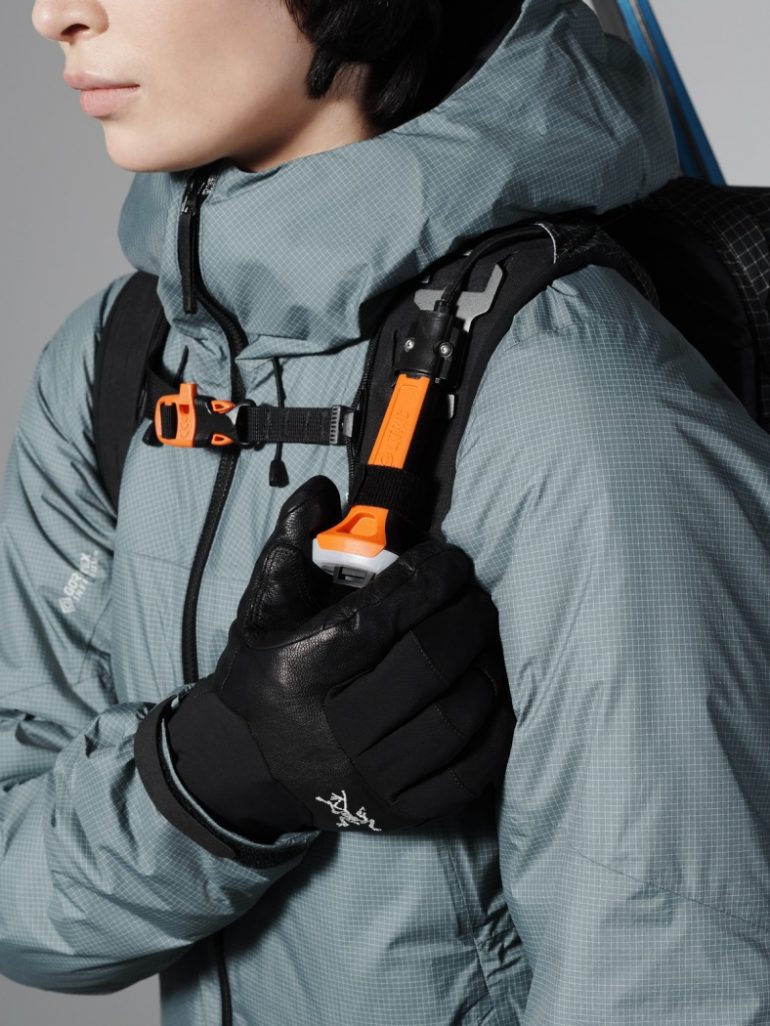
The trigger handle had be swiveled easily to lock out to prevent an accidental discharge.
We’ll also have to test this in person, but it looks as if the airbag repacking protocol is simplified. Some, like me, find the usual folding process a bit like moderate Origami. Also, maybe I missed it in the product announcement video presentation, I can infill later, but I’m unsure if the avy bag system is removable from either the Ortovox or Arc’teryx series of packs.
Supercapacitor technology is not new; Alpride’s E1 uses the technology- it is licensed by several vendors, including Scott, Osprey, and Black Diamond. Next year, Alpride releases its E2 system, which will be, among others, licensed by BCA. And Arc’teryx is already in the electric airbag scene with its Voltair series.
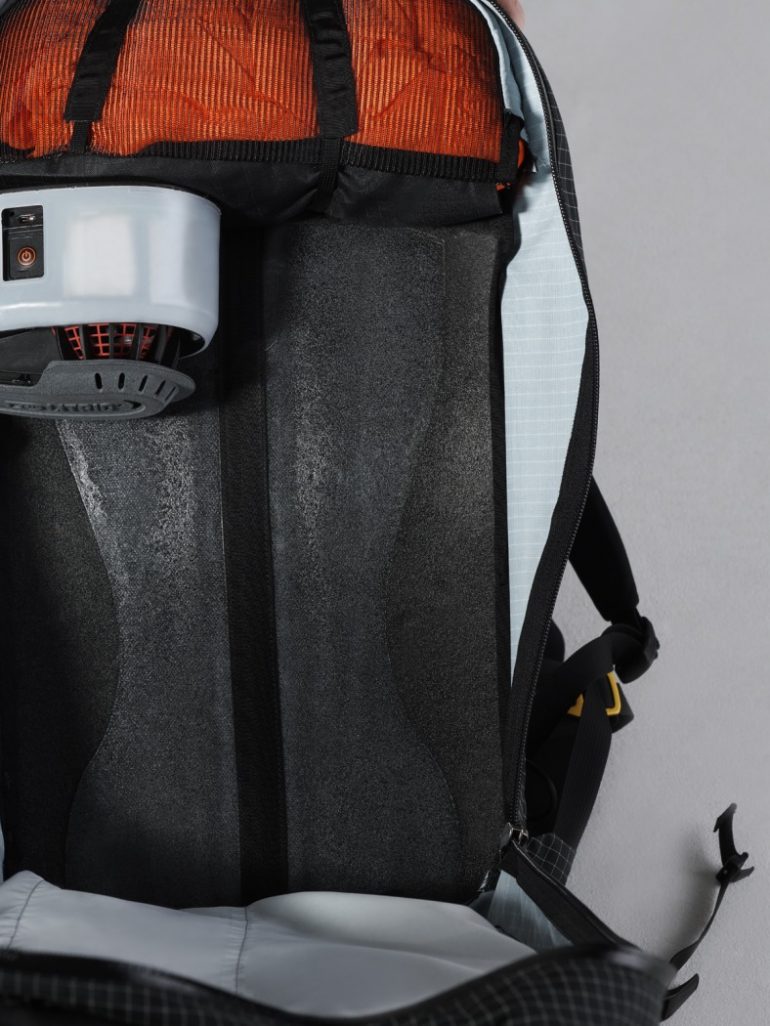
A view of the Arc’teryx’s 32L interior. Planty of room for storage – the airbag is ready for delpoyment at the top of the main compartment.
The collaboration between these two giants and competitors is new: Canada-based Arc’teryx and German Ortovox (where the technology is manufactured) bring serious design chops to the drawing board. Ortovox has been a leader in avalanche transceiver technology since the early 1980s, while Arc’teryx has often pushed trends in the apparel space and brought cutting-edge climbing harnesses to market in the 1990s. What is also of interest, in this case, are the two discrete takes on how best to integrate the LiTRIC™ system into a ski/ride pack.
The cost is worth putting in context. None of us on the outside know the actual capital investment backcountry ski/ride companies make to develop new products. We don’t know their actual bottom line—their return on investment after a certain number of widgets are made, then sold. Avalanche airbags are expensive. So are skis, boots, and bindings, for that matter, and the prices for these items will likely rise next year. But, as we have become conditioned to pay a certain price for safety gear, say $80 for a shovel, $70 for a probe, pushing $300+ for a beacon, and the $150 range for a helmet, the cost for an avalanche airbag still shocks. Sure, some come in around the $450 mark, but paying $700 or more or breaking into the 1k range is not out of the question.
Equipment companies are not non-profits; they need to see positive ROI to remain viable. So don’t be shocked when you learn the new bags will be over $1000 with the dead bird’s packs pushing beyond the $1500 mark.
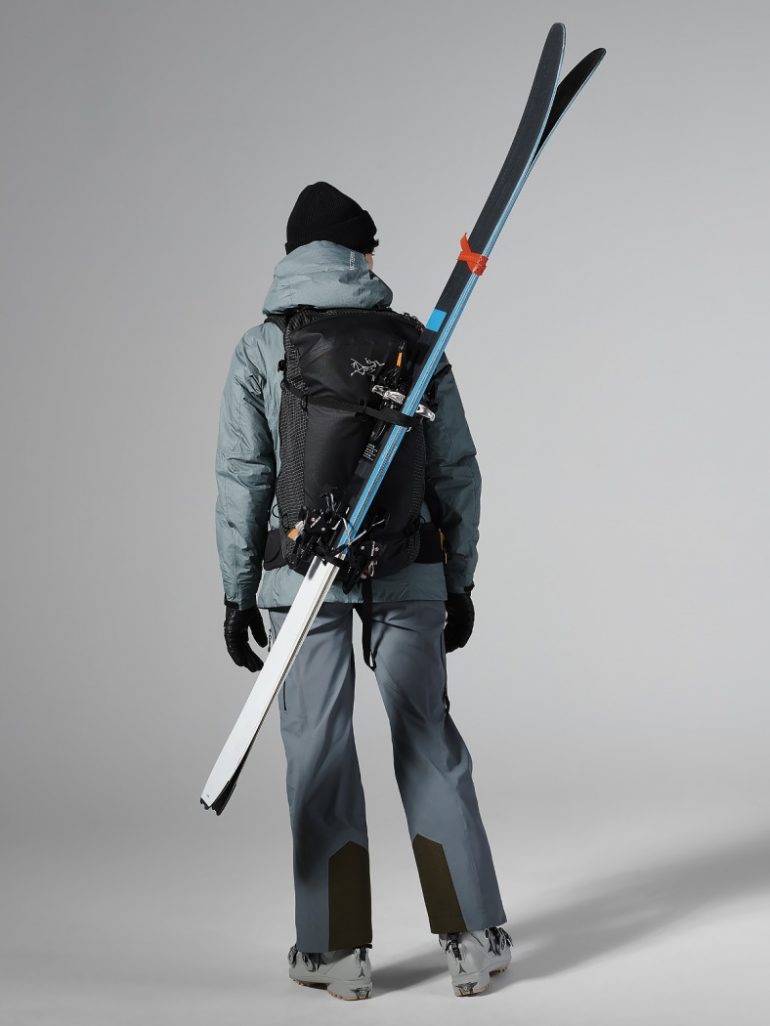
The ski carry on Arc’teryx’s 32L pack featuring the LiTRIC™ system.
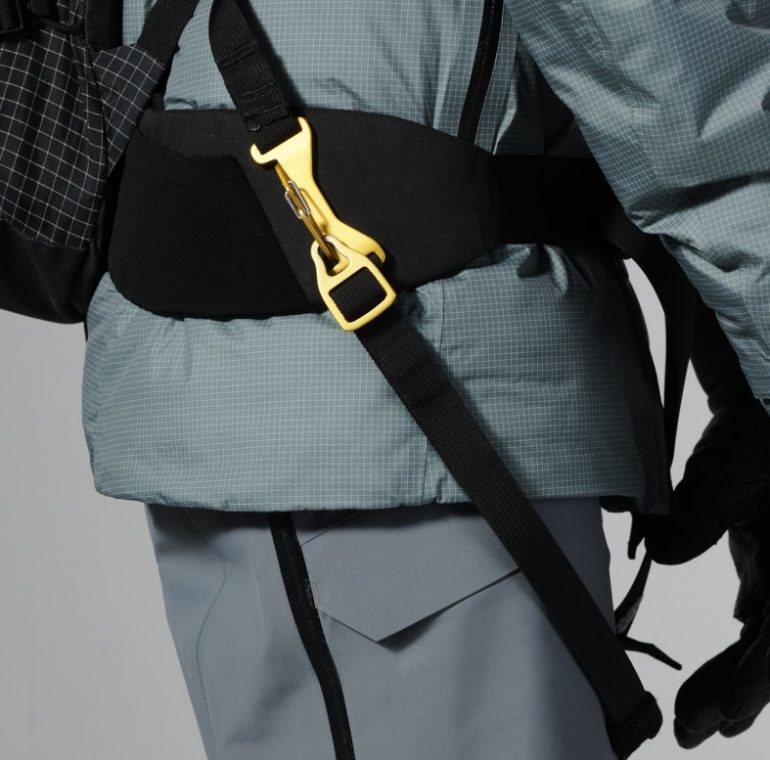
We get an idea here of the leg strap that runs through the legs and attaches on the side of the wasitbelt with an easy clip-in system.
Arc’teryx
First up, Arc’teryx. Three sizes of LiTRIC™ system pack will be available next fall: a 16L, 32L, and 42L range. All three include staples like a safety tool pocket, external helmet carry, ability to carry axes. Skis need to be carried diagonally, while boards are carried vertically. The zippers are waterproof and possess that iconic, clean Arc’teryx look.
Prices:
16L – $1700
32L – $1800
42L – $1850
Ortovox
Ortovox took a different angle on pack design. They offer a fixed volume pack, the AVABAG LiTRIC ZERO, at 27 liters and 4.3 pounds. According to Ortovox, this bag is designed for day tours and includes places to externally attach axes and skis, while safety tools are secured in sleeves integrated into the pack’s main compartment. The Zero features a more minimalist waistbelt.
For those looking for pack volume options with a single LiTRIC™ system, the real buzz comes from the AVABAG LiTRIC TOUR, and AVABAG LiTRIC FREERIDE. These are modular pack systems based on back panels (bases) with interchangeable, zippered packs. The zippered-on packs include ski/board carry systems, helmet nets, and axe attachments.
The TOUR version back panel (or base) comes in a regular and a short option with the pack’s size/volume ranges available in a 28L short, 30L, 36L short, and 40L. The Tour allows for safety tool storage in a separate compartment.
The FREERIDE also comes in a regular and short back panel with the corresponding bag options: 16L short, 18L, 26 short, and 28L.
Ortovox says the FREERIDE base and the TOUR base are interchangeable (short or regular dependent) with the Tour zip-on bags or the Freeride bags. The waistbelts on both models, the FREERIDE and TOUR, are more robust than the ZERO. We’ve not seen the bags or back panels in person, so determining the real difference between the Tours and Freerides is tough to do at the moment. And, to top it off, Ortovox says the system is removable from their packs.
Prices:
ZERO: $1200
TOUR: $1300-$1400
FREERIDE: $1250-$1350
We’ll keep you updated on these packs as they continue the rollout and we’ll add overall pack weights ASAP as we’re hoping to have some testers in the next month or so.
Jason Albert comes to WildSnow from Bend, Oregon. After growing up on the East Coast, he migrated from Montana to Colorado and settled in Oregon. Simple pleasures are quiet and long days touring. His gray hair might stem from his first Grand Traverse in 2000 when rented leather boots and 210cm skis were not the speed weapons he had hoped for. Jason survived the transition from free-heel kool-aid drinker to faster and lighter (think AT), and safer, are better.

